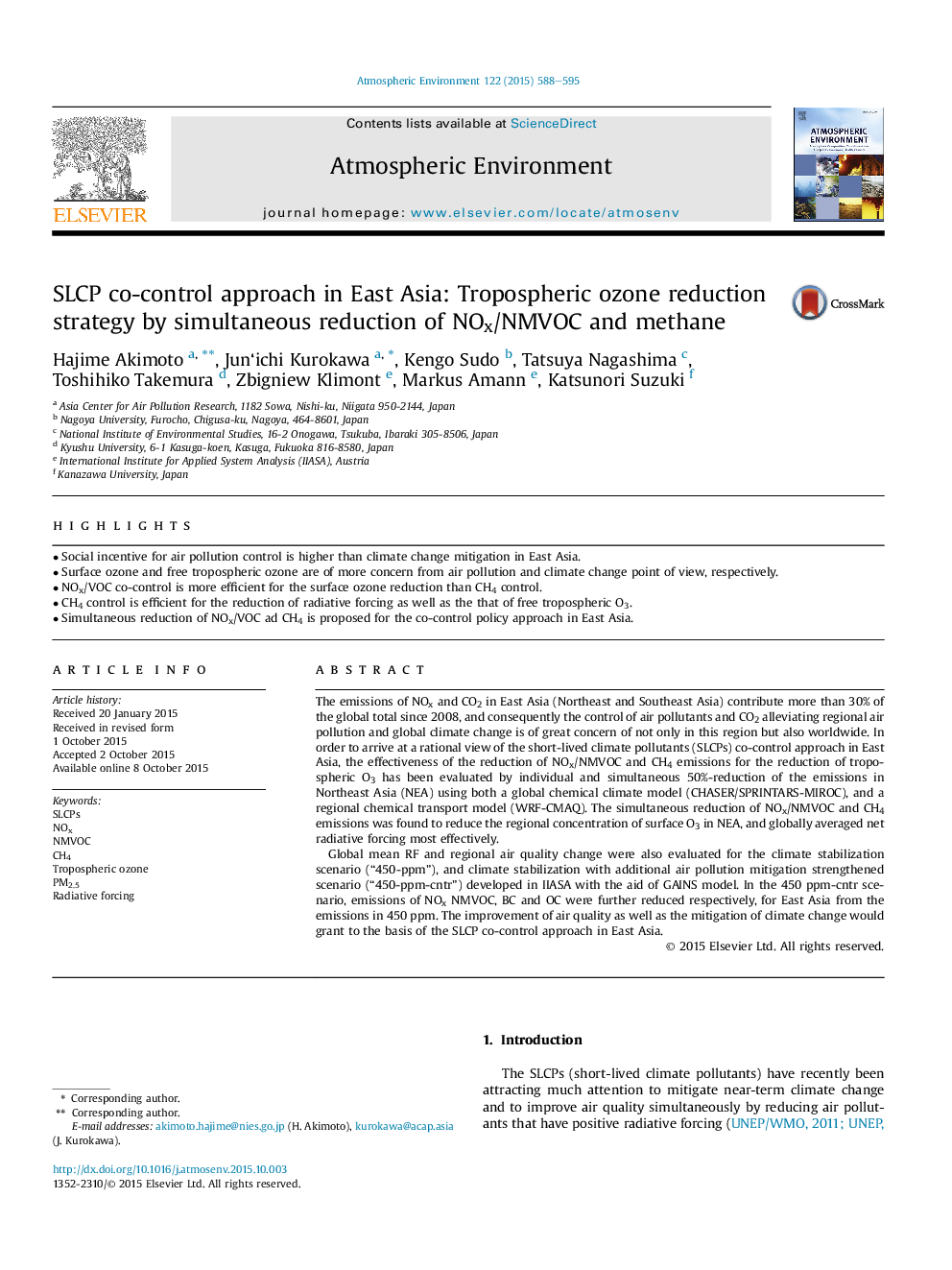| کد مقاله | کد نشریه | سال انتشار | مقاله انگلیسی | نسخه تمام متن |
|---|---|---|---|---|
| 6337066 | 1620349 | 2015 | 8 صفحه PDF | دانلود رایگان |

- Social incentive for air pollution control is higher than climate change mitigation in East Asia.
- Surface ozone and free tropospheric ozone are of more concern from air pollution and climate change point of view, respectively.
- NOx/VOC co-control is more efficient for the surface ozone reduction than CH4 control.
- CH4 control is efficient for the reduction of radiative forcing as well as the that of free tropospheric O3.
- Simultaneous reduction of NOx/VOC ad CH4 is proposed for the co-control policy approach in East Asia.
The emissions of NOx and CO2 in East Asia (Northeast and Southeast Asia) contribute more than 30% of the global total since 2008, and consequently the control of air pollutants and CO2 alleviating regional air pollution and global climate change is of great concern of not only in this region but also worldwide. In order to arrive at a rational view of the short-lived climate pollutants (SLCPs) co-control approach in East Asia, the effectiveness of the reduction of NOx/NMVOC and CH4 emissions for the reduction of tropospheric O3 has been evaluated by individual and simultaneous 50%-reduction of the emissions in Northeast Asia (NEA) using both a global chemical climate model (CHASER/SPRINTARS-MIROC), and a regional chemical transport model (WRF-CMAQ). The simultaneous reduction of NOx/NMVOC and CH4 emissions was found to reduce the regional concentration of surface O3 in NEA, and globally averaged net radiative forcing most effectively.Global mean RF and regional air quality change were also evaluated for the climate stabilization scenario (“450-ppm”), and climate stabilization with additional air pollution mitigation strengthened scenario (“450-ppm-cntr”) developed in IIASA with the aid of GAINS model. In the 450Â ppm-cntr scenario, emissions of NOx NMVOC, BC and OC were further reduced respectively, for East Asia from the emissions in 450Â ppm. The improvement of air quality as well as the mitigation of climate change would grant to the basis of the SLCP co-control approach in East Asia.
Journal: Atmospheric Environment - Volume 122, December 2015, Pages 588-595